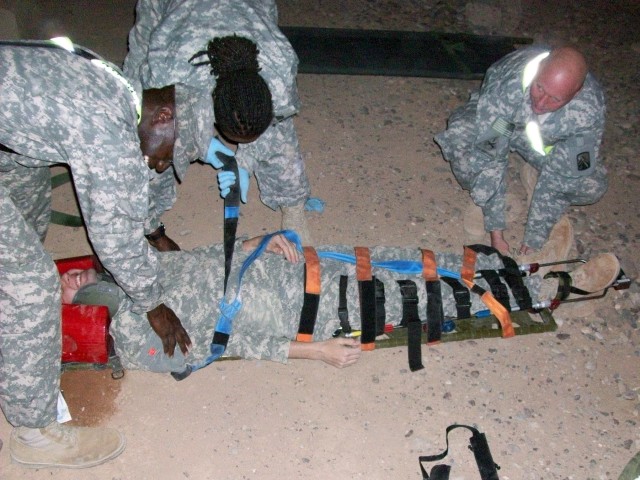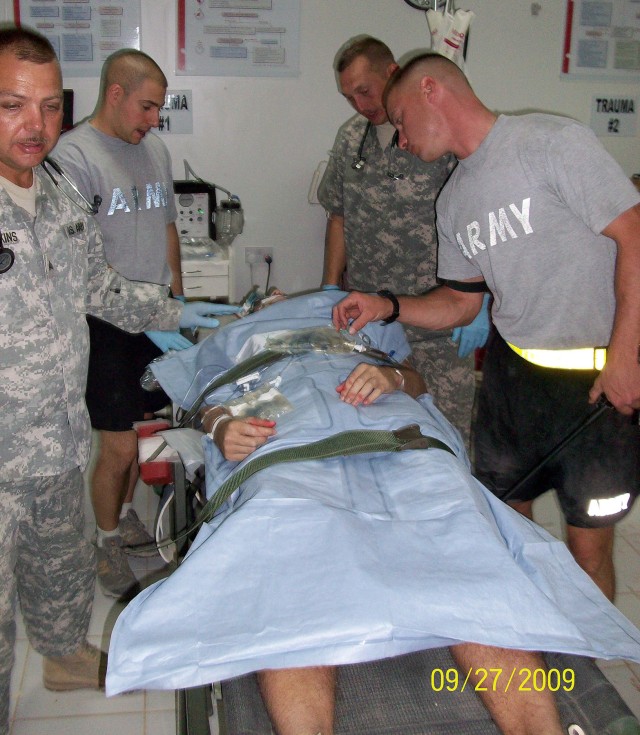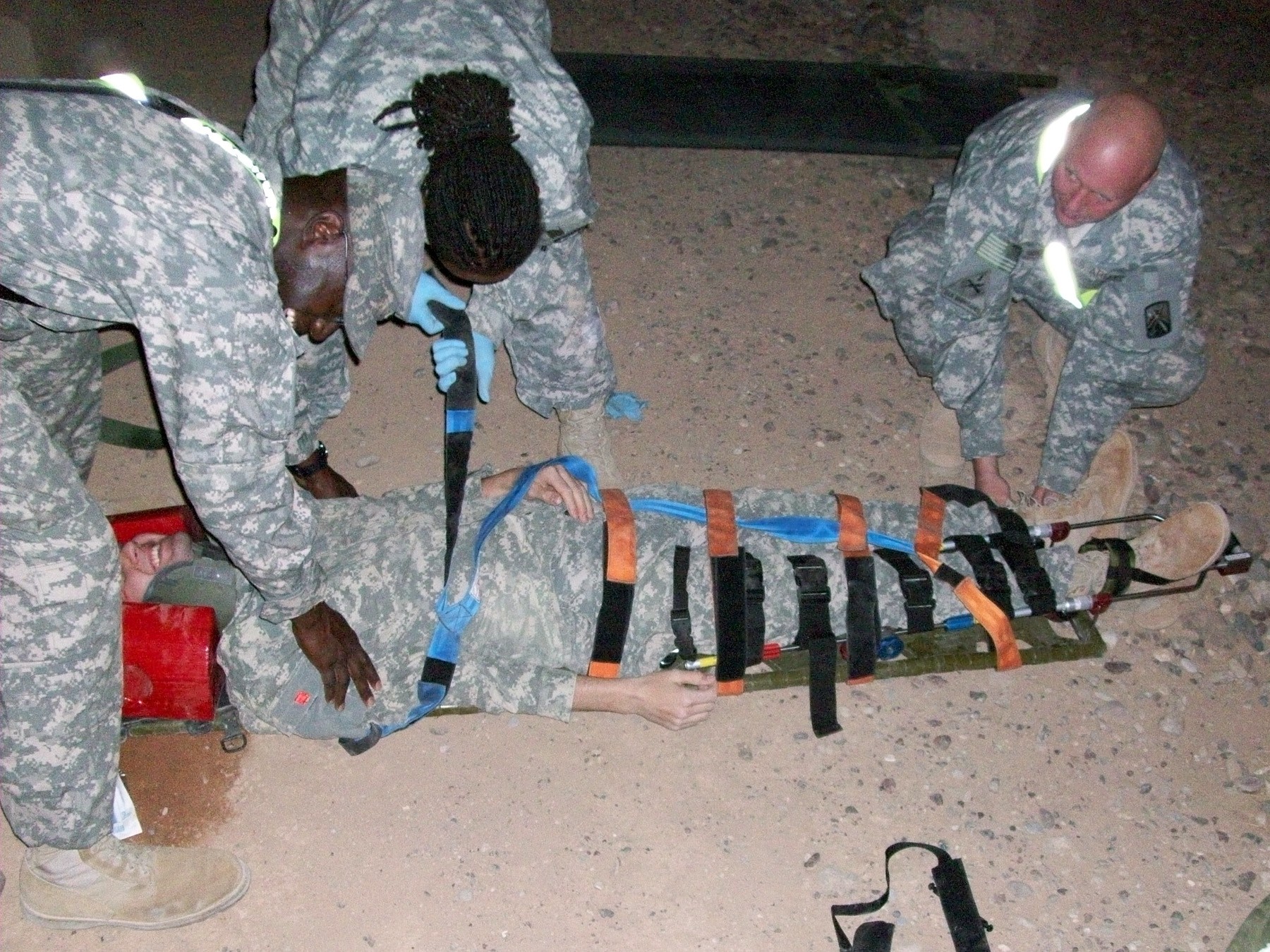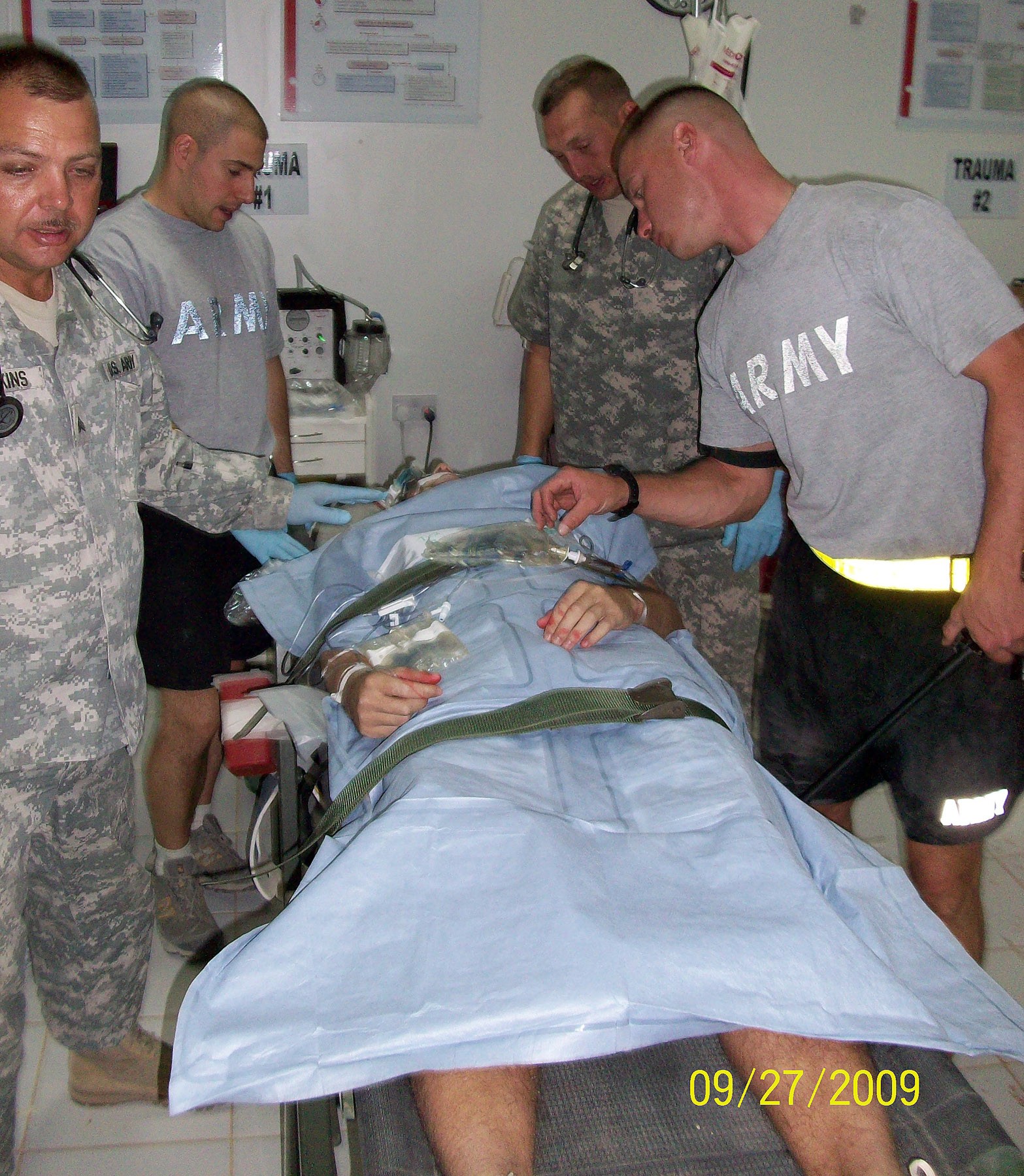CONTINGENCY OPERATING LOCATION Q-WEST, Iraq - 15th Sustainment Brigade medics conducted emergency medical training with their doctors for the first time here Sept. 26 in order to make them more comfortable with difficult and stressful emergency situations.
The exercise helped familiarize the medics with trauma equipment and procedures as well as showed them the challenges of driving a front line ambulance at night.
Two Soldiers played the role of the injured using moulage, or fake blood, and injuries to increase the realism of the training.
The evacuation team, the first responding medics on call, left for one of the living areas from the troop medical center, TMC, quickly after receiving the call that there were wounded on base.
"It's difficult driving, especially at night ... it's important to know where you're going," Spc. Teresa McCall, 15th SB medic said.
Spc. Jeffery Blackmon, another 15th SB medic added, "[The] sooner we get to the patient the better off they'll be."
One role-player had a simulated gunshot wound to the head and broken leg while the other was unconscious with simulated gunshot wounds to the chest and leg.
The evacuation team then simulated treating for life threatening injuries before bringing the Soldiers back to the TMC for further treatment.
Upon arrival at the TMC, one medic quickly documented the injuries to aid in a medical evaluation request while others brought the role-players to the treatment room.
The medevac request is usually sent soon after a patient needing it arrives.
"Within a minute of them coming inside the door," Pvt. Mandy Dixon, 15th SB medic said.
The medics said that medevac helicopters could arrive within 15 minutes ready to take the injured to one of multiple facilities, depending on which one's capabilities best fit the patients needs.
In the treatment room another team of Soldiers took over to give the role-players intravenous fluids and simulate inserting a breathing tube in the unconscious patient by taping it to his face.
Although the medics knew much of how to treat the injuries, 15th's doctors were there to direct the action.
"Everybody is trained to do evac, treatment [or] whatever it needs to be," McCall said.
The medics agreed that the training was important and hoped they would have a chance to do more, especially with some of their newer counterparts from other units.
For now, Dixon is confident that she and her comrades are prepared.
"The 15th medics are ready and able to save a life."




Social Sharing